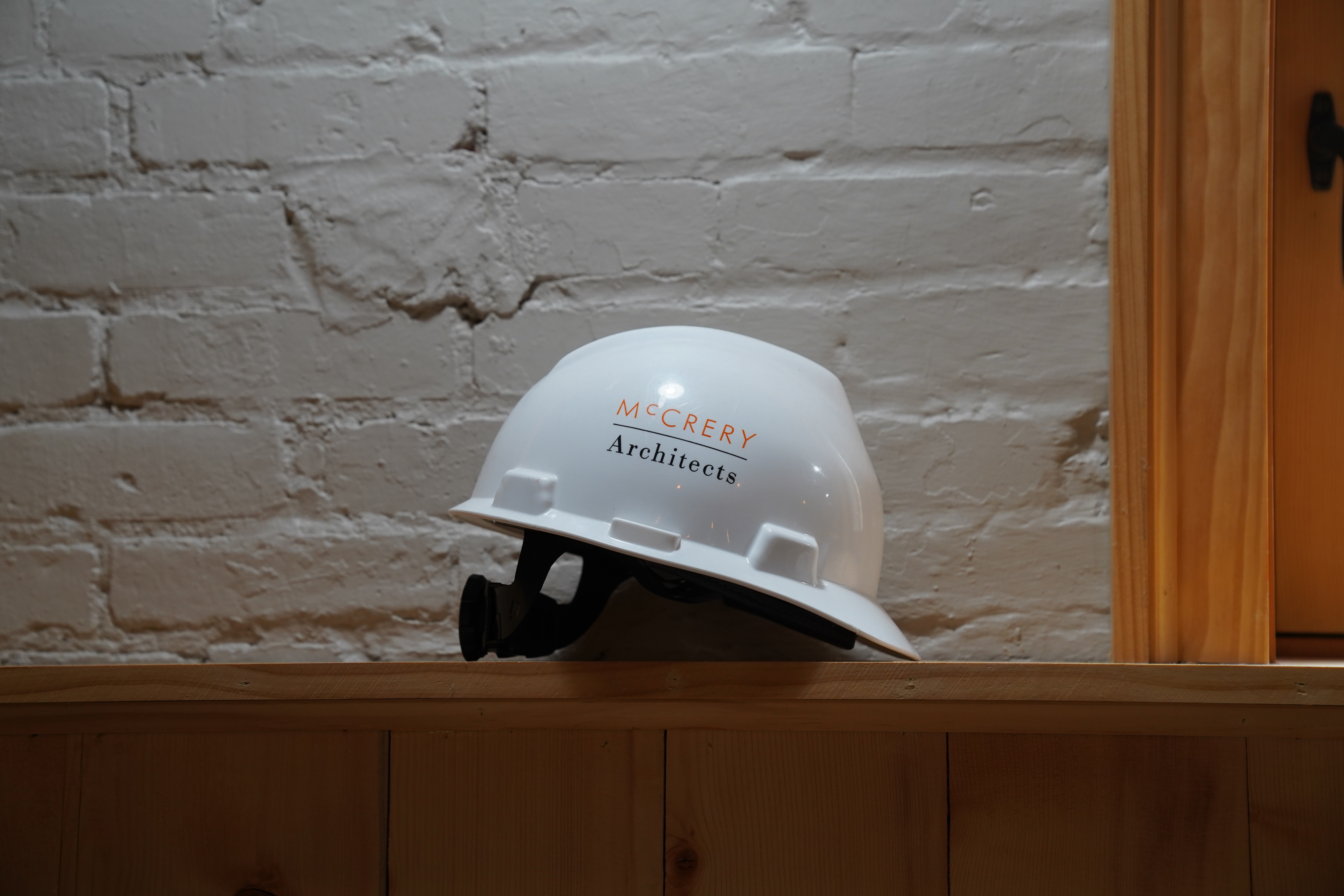
Known for his impressive credentials and stylish bow-ties, Professor James McCrery is among the many well rounded professionals who work for the School of Architecture. Since 2016, he has balanced being a full time faculty member with being the founding principal of his own firm, McCrery Architects. On top of this, James is among the seven members of the United States Commission of Fine Arts, making him a force in the field of classical architecture.
Before McCrery came to Catholic University, he had been running his firm for several years. McCrery Architects has existed in many places, from its location in Gallery Place before the financial crisis of 2008 to James’s home office. James recalls, “My home office grew quite a bit to the point where my wife eventually said, “You have to take your office out of our house.” Which I immediately obeyed, and I found space in a row house on Capitol Hill.”
From there, the firm found a home near Union Station in 2021. James saw the importance in finding a space that would allow the firm to expand. Originally, the space was a delivery stable back when it was common to rent a horse and carriage. From there, it was converted into a photography studio, and then it was a storage space for a local pharmacy. After that, James purchased the property and made it into the firm he always hoped for. “I wanted my firm to be a place that could serve our clients well, and where it could be a wonderful place for young architects to come and grow after they finish their education.”
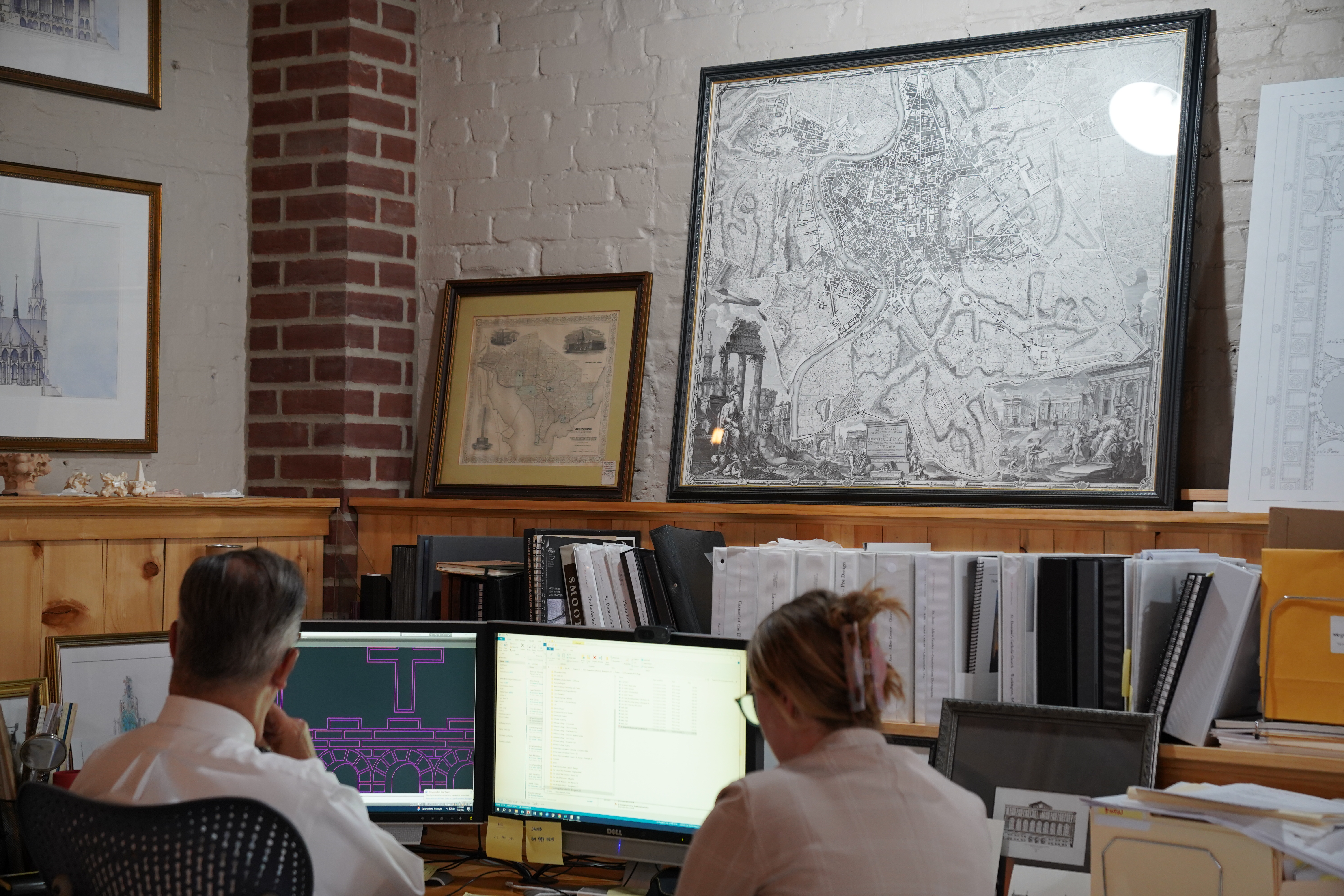
James and his employees put their heads together to design a space that would accomplish just that: be an educational space for those who work there, and a welcoming place for clients.
“I’ve almost always worked in what’s called an open office. And I know that through working in offices like that, I always learned more and more. And so I’ve always been committed to being in an open office - because you overhear conversations, and you are invited more easily into discussions. Not everything is cut and dry in architecture, and there’s a lot of ways to approach different problems; you learn and become a better, wiser, more experienced and more capable architect by being in an open office.”
Once they came to that decision, they ran with the design concept. Since the upper level is open in the center, conversations can be had between different floors. The large windows on the roof brings in natural lighting, allowing for the firm to cut down their electricity bill. They kept the original materials of the building, like the original brick and wooden panels. The office space features a kitchen and a constantly growing library, which are both accessible to all employees.
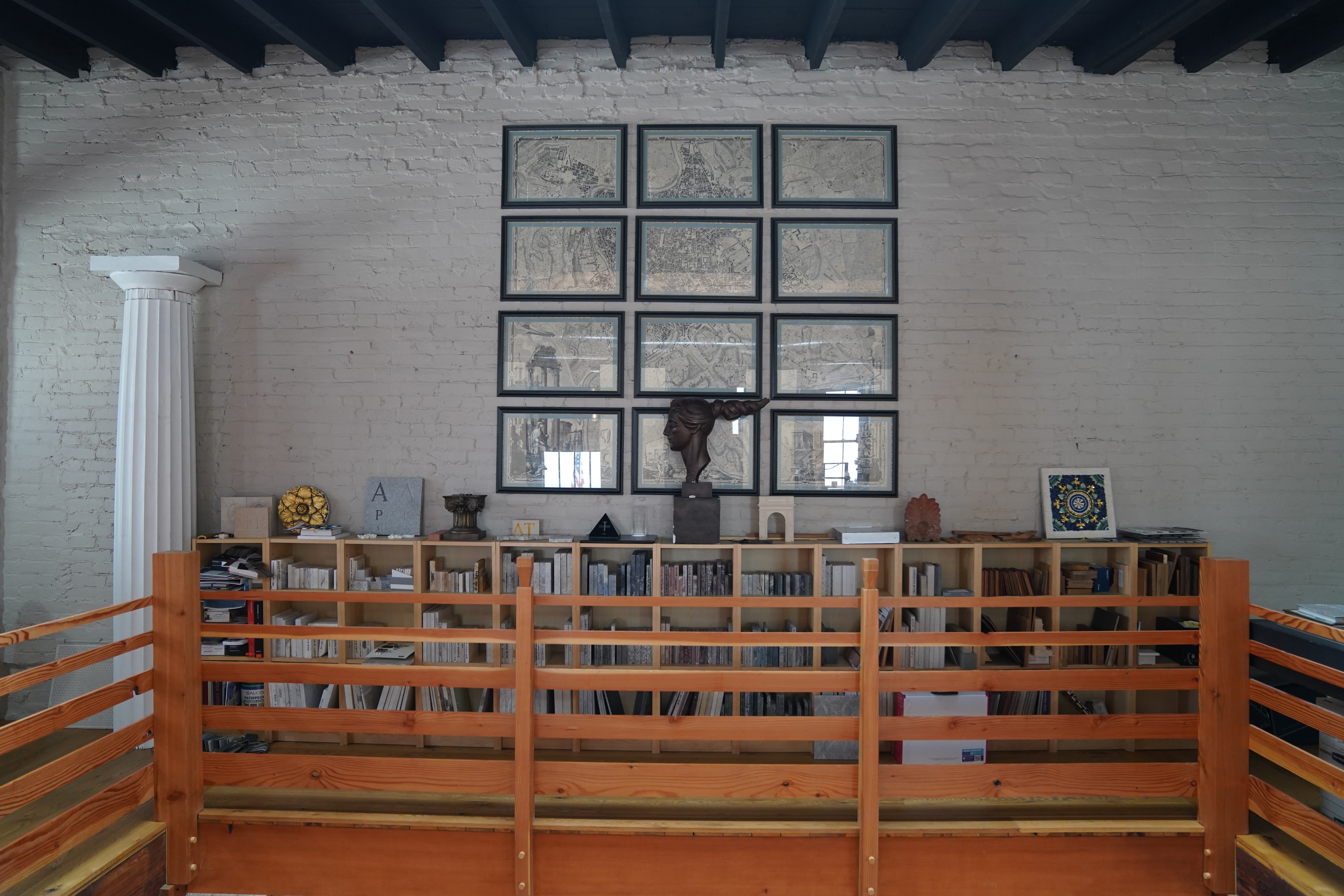
“The original fabric of the building - it’s a beautiful two-story brick building on the outside and on the inside. Where it made sense, we kept the brick exposed. On the outside of the building is the original unpainted brick. On the interior, some of it was unpainted, some of it was painted… The really interesting parts of the building are the wood components; the posts, the beams, all of the floors and ceilings are made of wood. Installing new finishes like the staircase, we stuck with the wood material. So much of the office is a natural finish. It’s been a good decision.”
James emphasizes the importance of working in a professional setting that still allows employees to broaden their knowledge, “My office has always been a teaching office, and I had clients jokingly call me professor… I’m a firm believer that your education doesn’t end when you leave school. I learn constantly.”
The people who work for him range from having less than a year of experience to having over ten years of experience. McCrery Architects is an environment that allows young architects to grow into professionals, and allows professional architects to continue learning. The firm’s distinguished reputation is proof that this is an excellent space for gaining valuable experience.
“The firm’s work ranges in scale from the statue pedestal for President Reagan now standing in the rotunda of the United States Capitol to the master plan of more than 500,000 square feet of mixed use development in the heart of Washington, DC. There is no project too large or too small for McCrery Architects.”
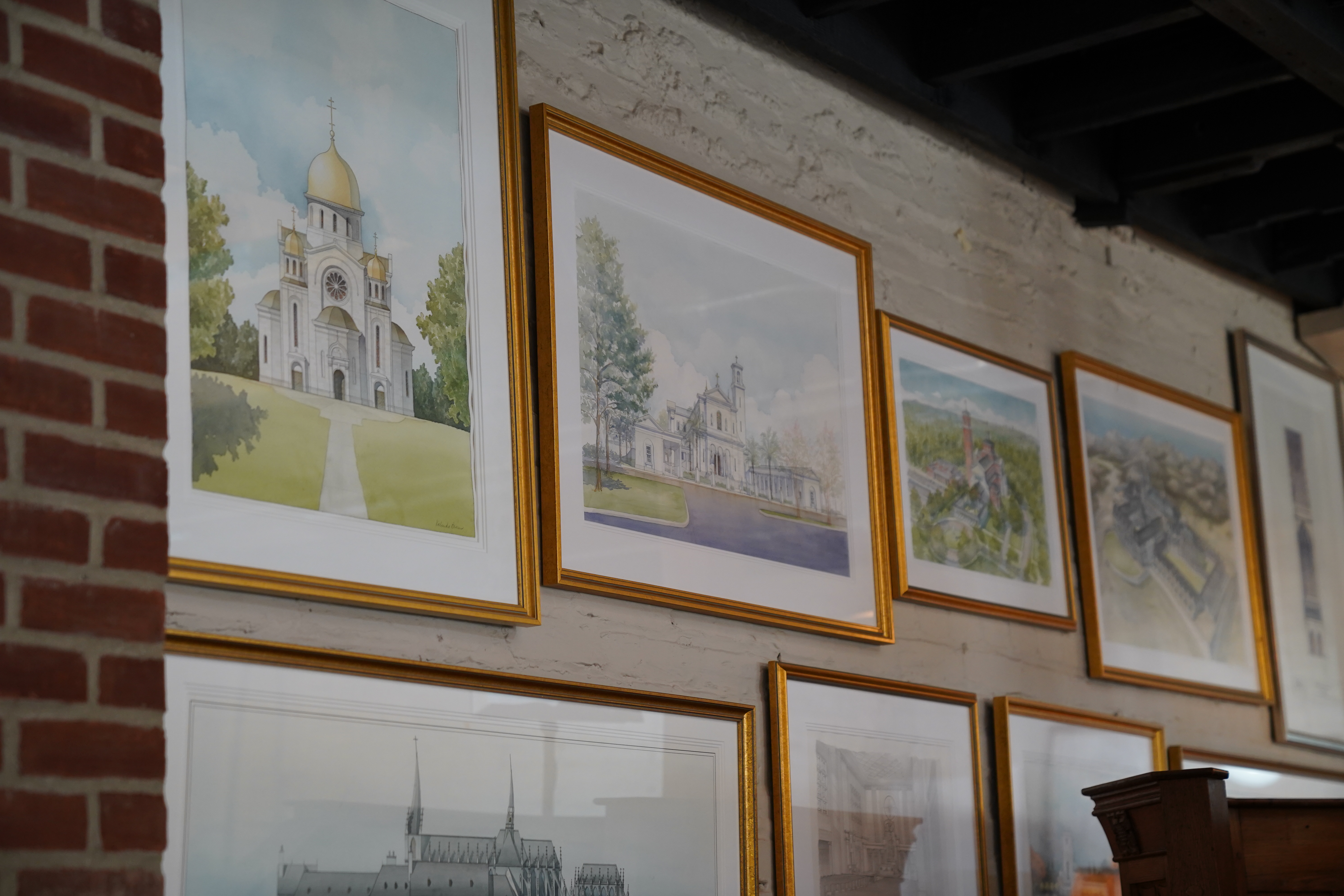
This reputation is what brought James to Catholic University; at the time, classical architecture was not part of the curriculum. He was brought onto the faculty in the fall semester of 2016 as a full time, tenure track professor. He teaches courses that range from Design Studios to Form Analysis to Constructions.
Before coming to the university, James claims he never envisioned himself being a professor; now, it’s his favorite part of his work week. “My favorite part of the job is teaching; that’s what I’m best at… but I also think it’s very important that I have experience in the architectural profession.” Although his full time responsibility is being a professor, he feels that having the experience running a firm gives him the ability to practice what he preaches. He also finds that working with young professionals keeps him young.
When asked what he feels the most rewarding part of the job is, James says, “Teaching people, and having what I teach have a large influence on the people who come into the school of architecture. It’s not something that just comes on graduation day, it comes on all the days leading up to it.”
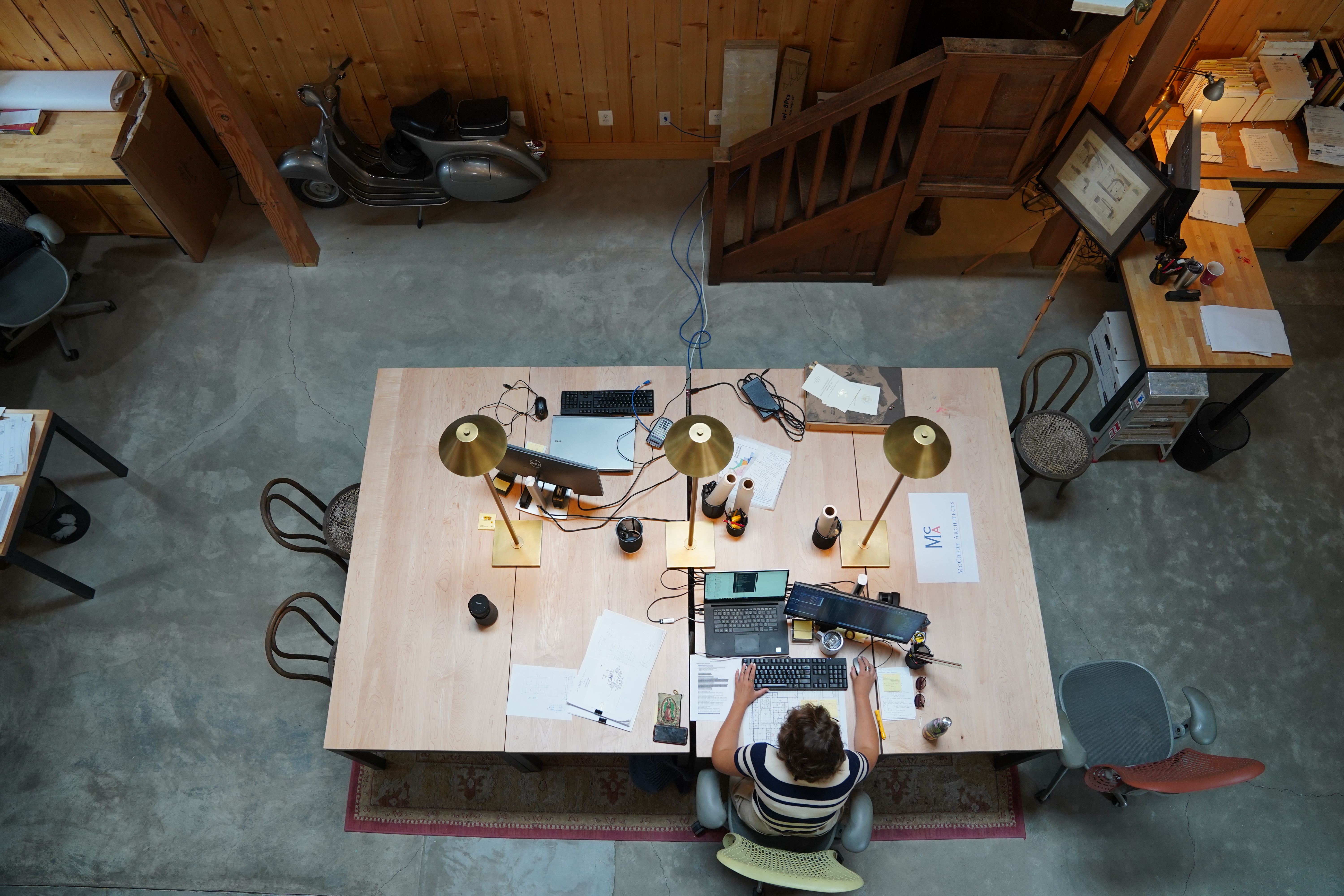
James’ advice to students looking for a job or internship is to, “research the firms that practice architecture that you admire. That’s another form of self-investment.” Understanding that the research a student does in opportunities is an investment in their future will be a successful effort, regardless of the outcome, is important.
“All that effort that you undertook to be successful in school, you need to continue to increase the level and quality of effort that you dedicate to your profession. And understand that school and the real world are different, and learn quickly how they’re different.”
McCrery Architects was recently commissioned by the State Legislature of North Carolina to develop a master plan for the historic State Capitol Grounds, with CUA alumnus and North Carolina native Samuel Merklein acting as a project designer.
